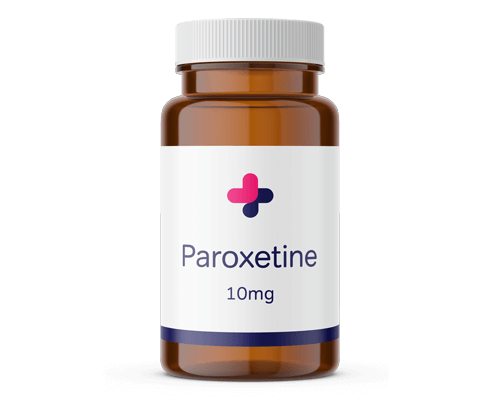Paroxetine side effects
Common side effects of Paroxetine include:
- Anxiety
- Impaired concentration
- Memory loss
- Drowsiness
- Confusion
- Dizziness
- Headache
- Tremor
- Altered taste
- Changes in appetite
- Weight changes
- Muscle weakness/muscle pain
- Joint pain
- Fever
- Constipation
- Diarrhea
- Nausea
- Vomiting
- Visual changes
- Tinnitus
- Difficulty sleeping
- Yawning
Please see the patient information leaflet for a full list of side effects.
Contraindications
Paroxetine should not be taken by individuals with a seizure disorder. Individuals with bipolar disorder, clinical depression or a significant anxiety disorder should be evaluated in person before starting paroxetine.
Drug interactions
Over 450 drugs are known to interact with Paroxetine. This includes common drugs such as Zoloft and Aspirin, as well as some more unusual medications. Therefore, it is vital that you tell your doctor about any medications or recreational drugs that you are taking, to avoid any negative interactions.
Can I drink alcohol when taking Paroxetine?
Alcohol can exacerbate the side effects of Paroxetine, such as dizziness, nausea, and confusion. Therefore, it is recommended that you avoid drinking alcohol while taking Paroxetine.
Can I take Paroxetine when pregnant?
Paroxetine is not recommended during pregnancy, as it can increase the risk of birth defects if taken during the first trimester. The risk of birth defects has been found to increase by 23%, meaning that the overall risk of birth defects is 3.69% for women taking Paroxetine in their first trimester. Paroxetine would not be prescribed for hot flashes in pregnant women; as a hot flash treatment, Paroxetine would only be prescribed to menopausal women.
Can I take Paroxetine when breastfeeding?
A small amount of Paroxetine can be passed into breast milk, and a small number of babies have experienced side effects from Paroxetine. However, this is not considered to be a significant risk, so breastfeeding mothers of healthy children may be able to take Paroxetine. The prescribing doctor will help you weigh up the risks and benefits of treatment before prescribing Paroxetine. Paroxetine would not be prescribed for hot flashes in breastfeeding women; as a hot flash treatment, Paroxetine is only given to menopausal women, however Paroxetine does have other uses such as the treatment of depression.
Can Paroxetine make you sleepy?
Paroxetine can cause drowsiness and difficulty concentrating. Some people however, experience insomnia and difficulty sleeping when taking Paroxetine.
Can Paroxetine cause headaches?
Headaches are a common side effect of Paroxetine. If you do experience headaches, you should avoid taking Aspirin as this can interact with Paroxetine.
Can Paroxetine cause high blood pressure or low blood pressure?
When combined with some specific antidepressants, Paroxetine can cause very high blood pressure which can persist for a few weeks, even if you stop taking it. Paroxetine will not lower blood pressure. Other antidepressants that can increase blood pressure are: Venlafaxine (Effexor XR), Monoamine oxidase inhibitors, Tricyclic antidepressants and Fluoxetine (Prozac, Sarafem, others)

















Quick and discreet
I ordered Azithromycin tablets for chlamydia treatment, received it next day in a brown discreet pack, and cheaper than all other pharmacies, can't ask for more
Jordan McCann